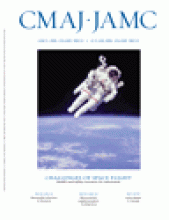Three of the authors respond:
As Mark Friesen correctly points out, association and causation are not synonymous. Whenever clinicians impute causality, they make a judgment based largely on common-sense principles. Our study 1 satisfies many of the Hill criteria, 2 including biological plausibility, temporality, coherence, consistency, consideration of alternative explanations and specificity.
Healthy skepticism about the results of observational studies is important because such studies can be subject to unmeasured confounding. However, Friesen offers no argument as to why unmeasured confounding should apply to some proton pump inhibitors (omeprazole, lansoprazole and rabeprazole) but not to pantoprazole.
The interaction between proton pump inhibitors and clopidogrel is the subject of considerable ongoing research. Friesen notes that Simon and colleagues adjusted for omeprazole use in their study, but it was neither designed nor powered to address the study question at hand. 3 In addition, of the 3 studies on this topic presented in abstract form at the American Heart Association meeting in October 2008, 2 reached conclusions similar to ours. 4,5 One of these studies, now published in full, 6 used a different analytical technique and data from those in other jurisdictions but yielded results virtually identical to ours. The third abstract, cited by Mark Friesen, described a post-hoc analysis of the CREDO trial that actually appears to support the same conclusion. 7 The study examined only the effect of baseline omeprazole use and found that patients receiving clopidogrel in combination with omeprazole had a higher rate of death, myocardial infarction or urgent revascularization at 28 days than patients receiving clopidogrel alone (10.3% and 5.4%, respectively; p = 0.051).
We agree that rabeprazole, omeprazole and lansoprazole exhibit differential inhibitory effects on cytochrome P450 2C19 8 and collectively contribute to the 40% increased risk of early re-infarction seen in our study. Although rabeprazole itself does not inhibit cytochrome P450 2C19, its thioether metabolite is a potent inhibitor, with an inhibition constant (Ki) second only to that of lansoprazole. 8 Moreover, Ho and colleagues recently showed that use of rabeprazole was strongly associated with an increased risk of recurrent events during clopidogrel therapy (odds ratio 2.83, 95% confidence interval 1.96–4.09). 6 Together, these observations make it difficult to justify the co-prescription of rabeprazole and clopidogrel. Although a post-hoc analysis of our study by individual proton pump inhibitors is intuitively appealing, such an analysis would almost certainly yield misleading conclusions. Stratification by every available agent would compromise both precision and discriminatory power, and the analyses would inflate the type I error rate by introducing multiple comparisons. Consequently, a real yet modest association could easily be misinterpreted as no effect.
Allen and McLean-Veysey suggest that pantoprazole and other proton pump inhibitors are not significantly different from each other on the basis of the observation that the point estimate for other proton pump inhibitors lies within the 95% confidence interval associated with pantoprazole. This highlights the widely underappreciated point that hypothesis testing is more than the simple generation of a number; it should be informed by an element of judgment and information from outside the experiment. A detailed exposition on this point is available elsewhere. 9
In our study, the comparison of pantoprazole with other proton pump inhibitors was a secondary analysis and is subject to the limitations of conventional hypothesis testing, including the influence of reduced sample size on significance levels. We anticipate that future research using alternative approaches and larger sample sizes will confirm the differential effects of various proton pump inhibitors on the clinical benefits of clopidogrel, as predicted by the pharmacology of these drugs. 8
Footnotes
-
Competing interests: None declared.











